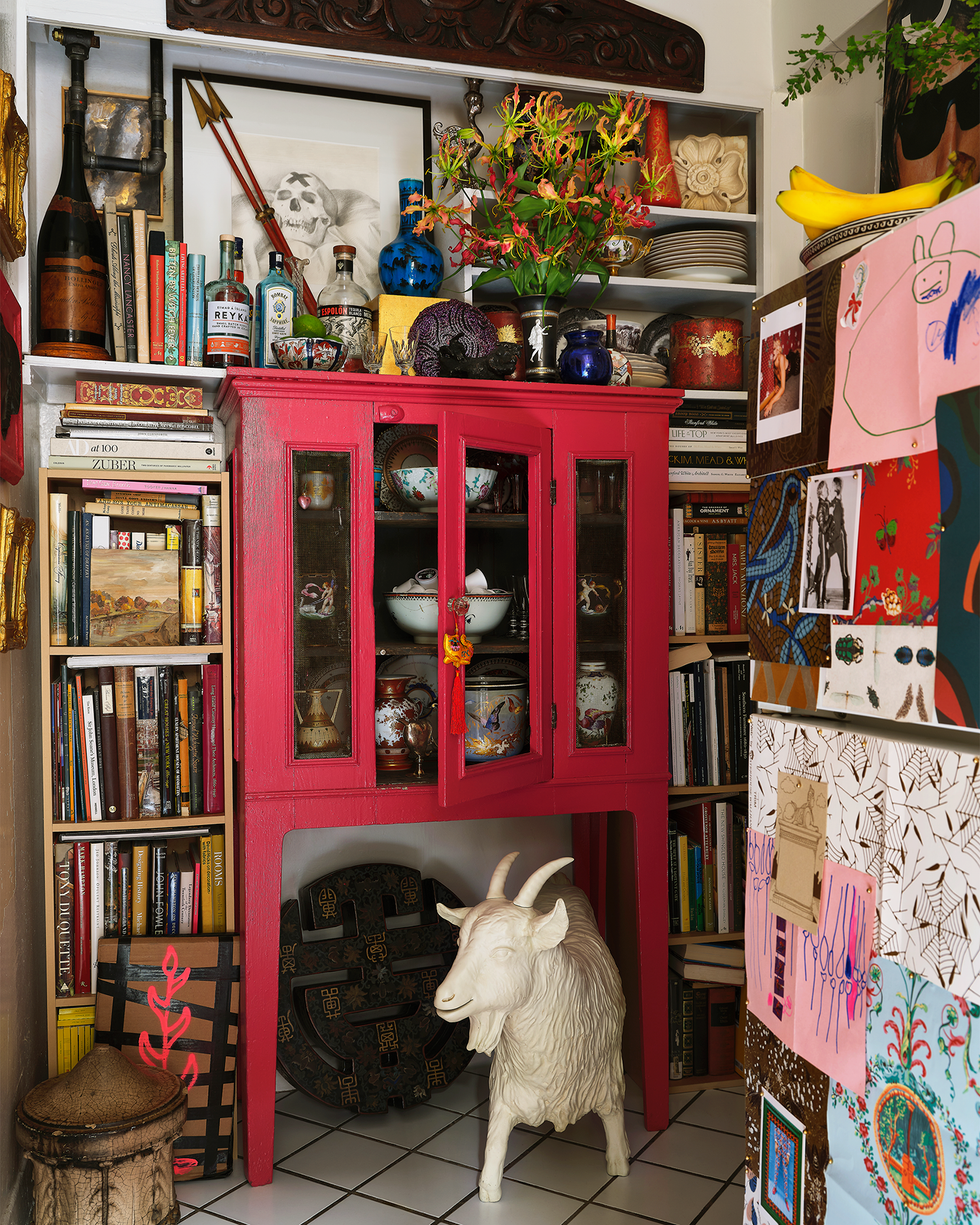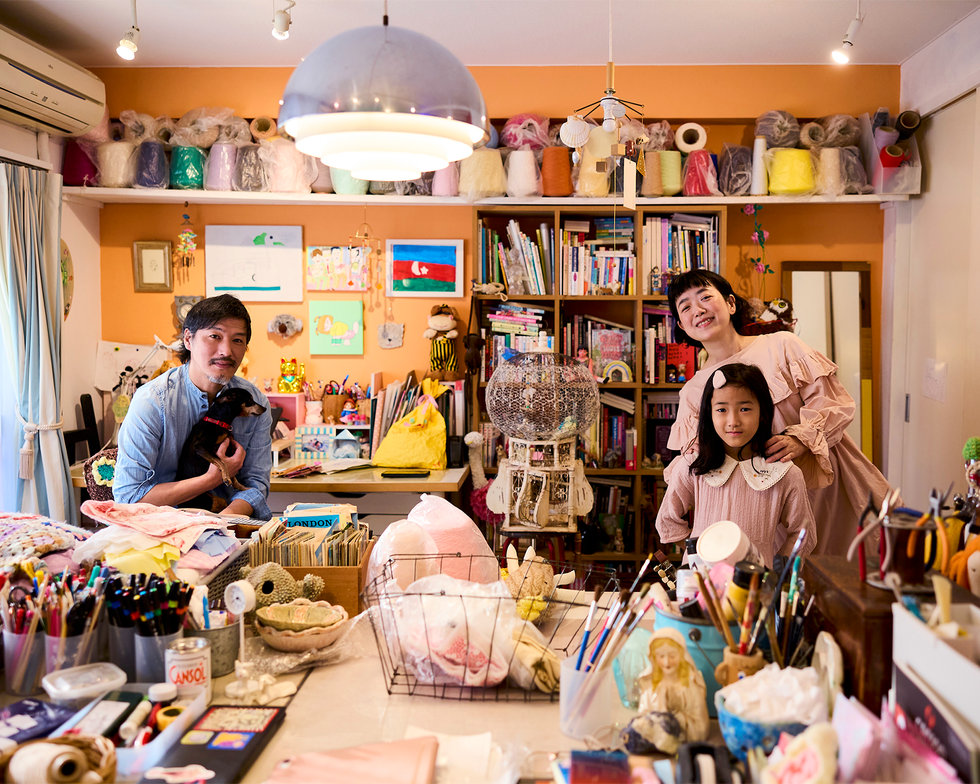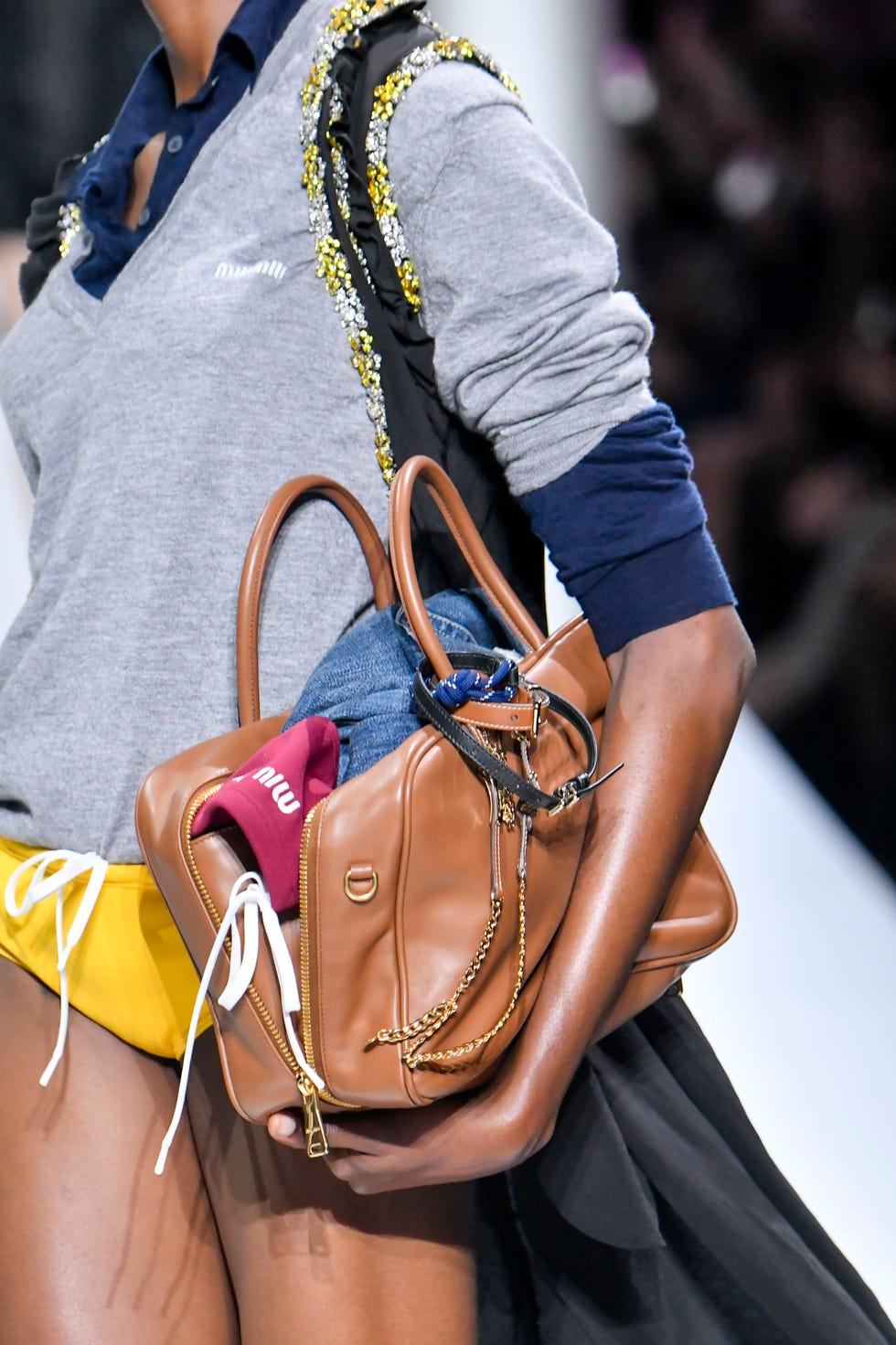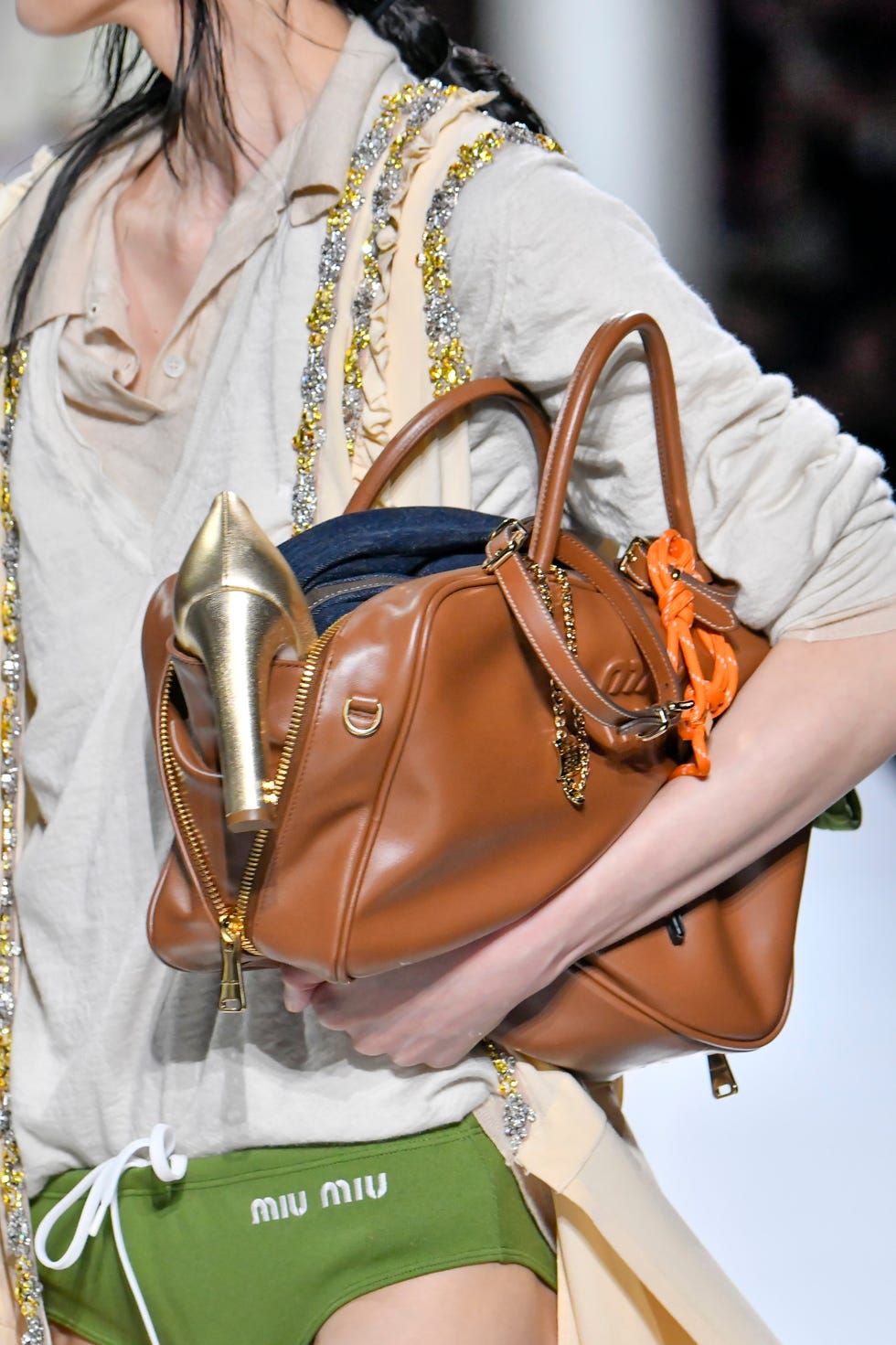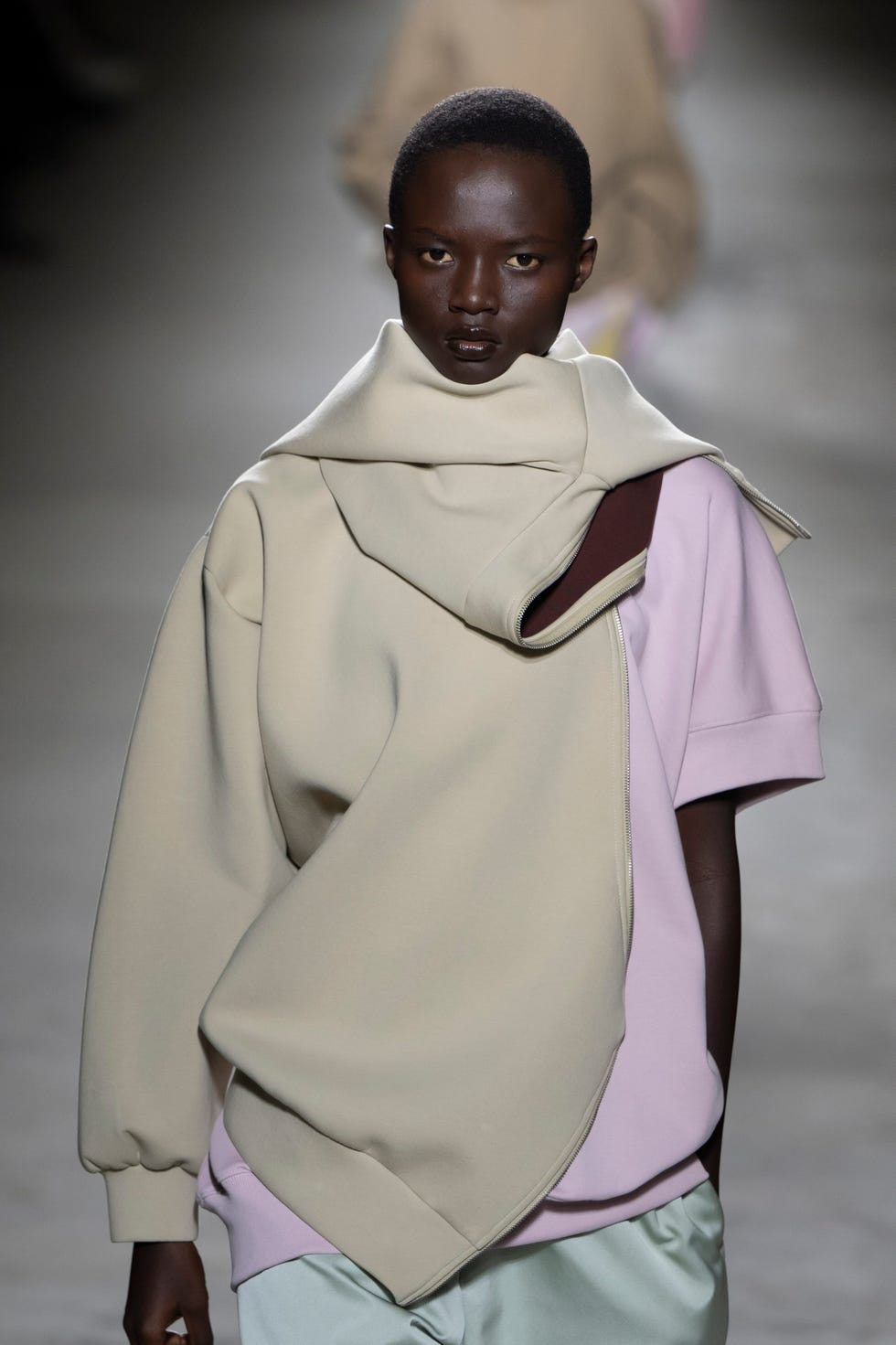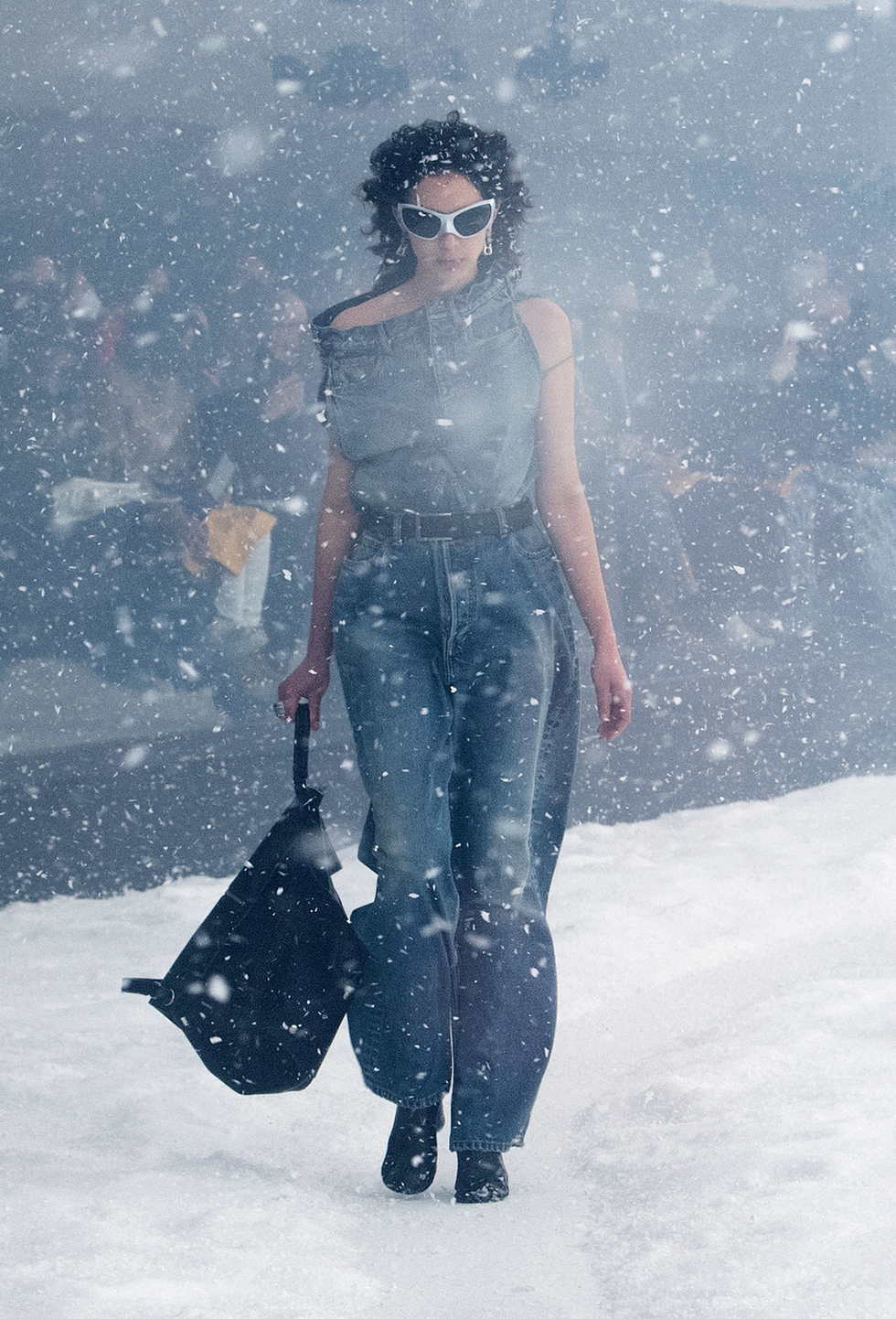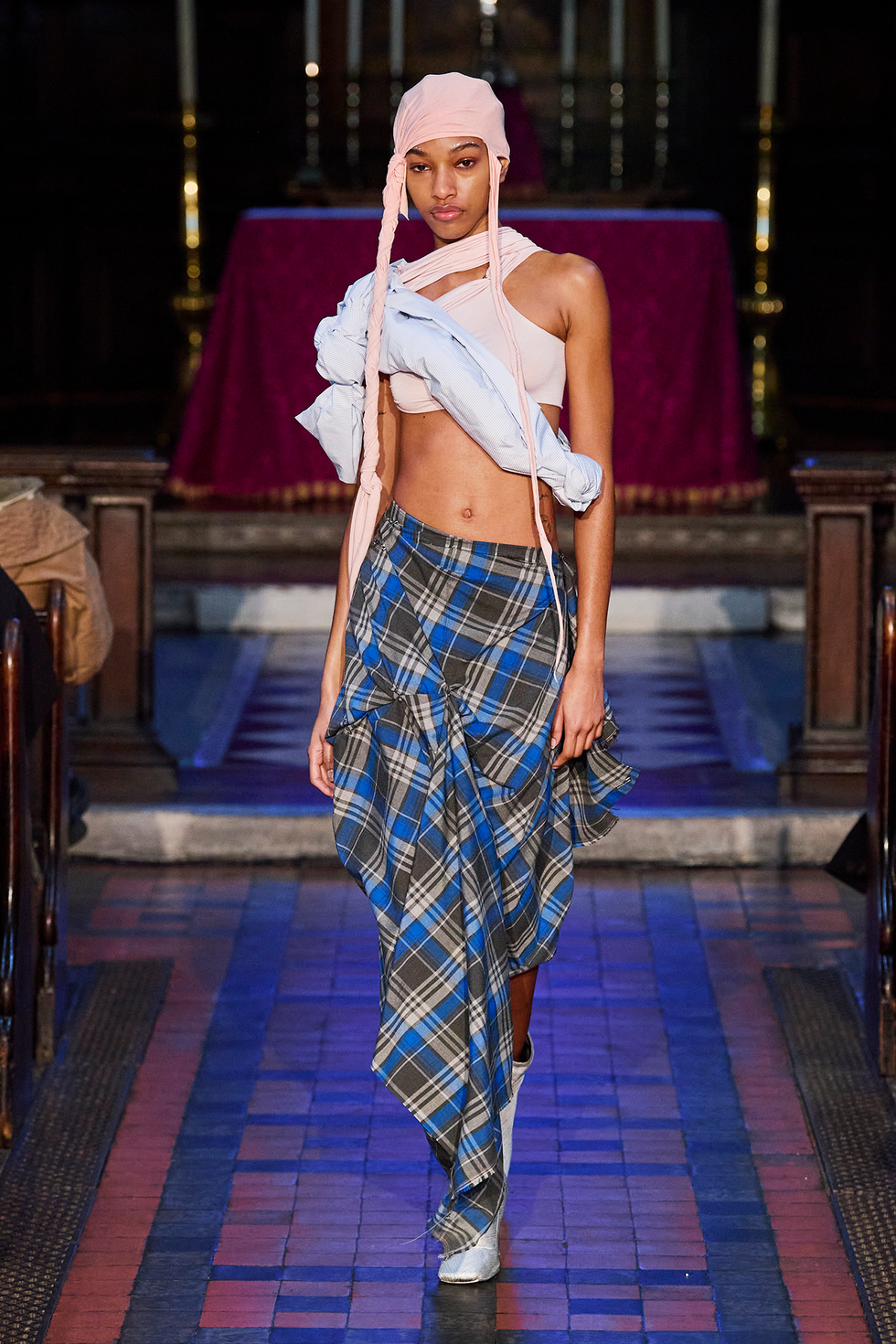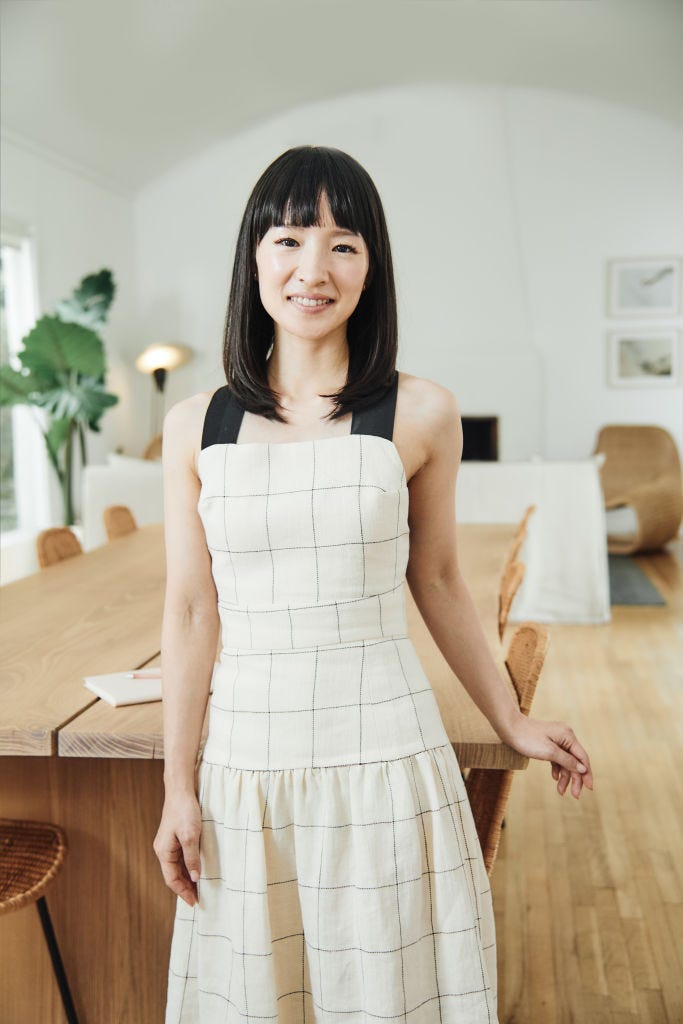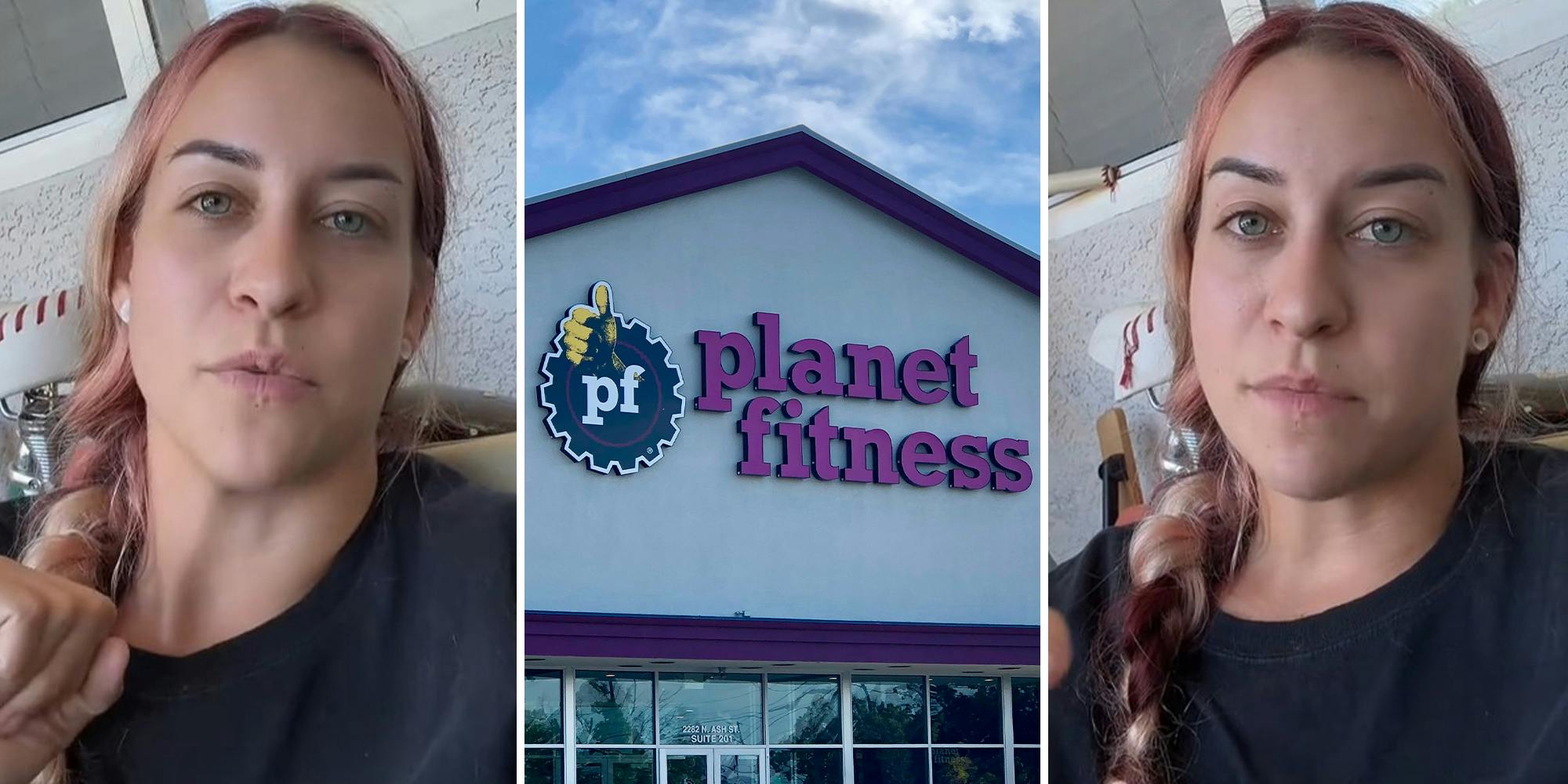Fashion
Why Messy Design Feels So Right for Right Now

In 2020, at the peak of the pandemic, before the first vaccines had rolled out, I took Instagram off of my phone. Peak pandemic had led to peak scroll; those of us lucky enough to be stuck at home on lockdown had too much time to peer into other people’s lives, filtered and algorithmically served up to sate our curiosities and stoke our insecurities. My screen-time reports were embarrassing. I was served an army of beige influencers; from their square frames, they stared back at me serenely in their beige loungewear with their beautiful beige children inside these airy, spotless beige homes in whatever vacation destination they had escaped to.
Where was the mess? Where were the piles of laundry? Books? Toys? Where were the tears? Where was the rage? The pandemic exposed so many cracks in our society, and certain swaths of Instagram projected a version of reality that seemed untouched by it. I logged off for many reasons, but this was one of them.
If this story makes me sound holier-than-thou, let me swiftly disabuse any notions of my so-called willpower: I never fully deleted my Instagram account (I still lurk on desktop), and I downloaded TikTok instead. I simply diverted my scroll addiction. But on TikTok, something else was happening: Behind the dances and pratfalls and cooking videos and #grwms were people’s real and messy spaces. Like me, they also had piles of clothes on chairs behind them and a stack of envelopes on a table that maybe they also would never open. That projection of authenticity is a critical part of TikTok’s appeal and contributed to its massive user spike during Covid.
In the ensuing years—and in a way that feels related to both the pandemic’s exposure of our broken social systems and the joyful messiness of TikTok—there’s been a shift in design away from the spare and pristine and sans serif and monochromatic and toward something more like the chaos of the real world we all navigate. To be sure, there have always been those whose tastes tended toward the magpie and maximalist, but what’s happening across culture over the past several years—from fashion to interior design to food and even floral arranging—seems like a bigger pendulum swing. And it’s a comfortingly affirming one at that.
Since we spent so much time in our homes during the pandemic, it’s fitting that our living spaces started to get weirder and wilder and more expressive. In the celebrity home tours that tend to go viral across social media, interiors have begun to look more like the charmingly hodgepodge cottage Cameron Diaz escapes to in the beloved Nancy Meyers romcom The Holiday than the austerely minimalist Kardashian mansions.
“There’s something gaslighting about Kardashian-style mausoleum houses,” says New York–based interior designer William Cullum. “That someone could actually live like that. I’m looking at my kombucha bottle on the table and thinking, if you’re in one of those interiors, you put a cup down and the jig’s up. There’s nowhere to hide. And just, what makes you smile or laugh?”
Cullum, who calls himself a collector (“I just love things. I love objects, I love art, I love clothing.”) and whose aesthetic leans toward “more is more,” has filled every square inch of his 500-square-foot Manhattan apartment with stuff. “In our tiny studio, there’s no room for wasted space, in the sense that I’m not going to have some bare travertine coffee table with nothing on it because I need that space for some funny planter I just bought.”
Another sign we’re collectively craving a more lived-in and cluttered look? The Selby is back. When the photographer Todd Selby launched his website, The Selby, in 2008, it became a sensation. He showcased cool creative people’s homes as they actually lived in them, with detailed shots of all their stuff, often arranged in charming vignettes. It was a style and approach that in many ways set the tone for Instagram when it launched two years later. “The premise [of what I do] has always been about real people and real places,” he says. “In the beginning, it was a strong reaction against the interior magazines and everything that was so sleek and minimalist. I was so bored with that.” In April, Selby released a new book, his first in a decade, called The Selby Comes Home, focusing on families living in creative ways.
“It is a chaotic thing to have a family,” Selby acknowledges. He is the father of two young girls. “But people can embrace that in different ways, and that’s what I try to show in my book. There are so many happy ways to have a family and have a house and have it not just be about designer furniture.” The book features 41 families from across the globe who live in wildly disparate spaces but all artfully give in to the chaos wrought by kids.
On the runway, fashion’s most resounding acknowledgment of life’s messiness came from industry oracle Miuccia Prada just this season. For her Spring 2024 Miu Miu collection, Mrs. Prada sent models down the runway in mashed-up outfits made up of swim trunks and tailoring and eveningwear, carrying bags exploding with underwear and heels and more of life’s detritus that can’t be contained. The collection, according to the show notes, explored a “rationale of beauty today—exploding, redressing.” Beauty, the notes continued, “must echo the complexity of our era: This collection is a search for a reflective definition, a reactive address of beauty for modern times.” Garments were intentionally distressed or washed or marked up to look lived-in.
There was a similar feeling evoked on the runway at Dries Van Noten. The designer’s mastery of prints and layering has always given off a homey, cozy, elegant vibe, and for Fall 2024, his last women’s collection before he retires, models wore tops that looked as if they’d been put on haphazardly and in a hurry; they were worn backward or had only one arm in a sleeve.
And I would be remiss not to acknowledge one of the industry’s most proficient and prolific agents of beauty and chaos, Demna at Balenciaga. The swirl of the real world has always been reflected in his work: His Fall 2022 show was set in a blizzard, a commentary on the then recently ignited war in Ukraine; for his Spring 2023 “mud” show, he trucked in more than 9,700 cubic feet of mud and covered the runway in it, “a metaphor,” the show notes explained, about being “down to earth”; his Fall 2024 collection showed garments that had been wrapped in packing tape.
When you make art that reflects the messiness, the trauma, of life, it resonates. London-based and Caribbean-bred designer Jawara Alleyne’s critically acclaimed Fall 2024 collection was inspired by the hurricanes that routinely wreak havoc on the Cayman Islands, where he grew up. Garments were worn as if a hurricane wind had savagely and exquisitely twisted and draped them.
“I’ve always been inspired, both in awe and respect, by hurricanes,” Alleyne says. “My first real experience with hurricanes happened in 2004 in the Cayman Islands, when Hurricane Ivan completely destroyed the islands. Being a part of that entire experience and seeing how the islands rebuilt, making use of the debris, reclaiming wood, and reworking valuable materials, was very inspiring. I think that phenomenon seeps into our identity as Caribbean people—the idea of recycling, repairing, reworking, circularity in practice.” He adds, “I find that there’s a magic that happens when you pull from real experiences.” Rihanna would agree. She recently bestowed the designer with the endorsement of a lifetime, name-checking Alleyne in an interview as her “new favorite designer.”
Madeline Bach, who is better known by the moniker Frosted Hag (which is also her Instagram handle), is part of a cohort of cake designers and pastry chefs who are pushing a messed-up and off-kilter aesthetic onto the fastidious world of desserts. There’s something gutterally satisfying about Bach’s cakes, which are leaning towers covered in hypercolor piping and adorned with flowers, dried stems, and feathers. If you picture a classic wedding cake—all neatly tiered and smoothed, rounded fondant-covered edges—and then imagine smashing it, rebuilding it, and taking it on an acid trip, that’s a Frosted Hag cake.
Each one, which she prepares in her Lower East Side kitchen (which has no dishwasher), is a reflection of whatever emotional tumult is happening in her life. “When I made a goth birthday one over the summer, every possible thing that can go wrong during a cake did, and I take so many lessons from that day,” she recounts. “The day before I made that, I was caught in a riptide at the beach and came a little too close to drowning. When I was working on the cake the next day and blasting emo music to get myself in the goth mindset, I didn’t realize how much stress my body was still under, and the entire cake collapsed on itself. I panicked and somehow remade everything, and then the same thing happened right before it had to be delivered. I assembled the cake back together and photographed it. It’s uniquely crooked. Then, when I took it to the venue, it collapsed again in the car. Everyone at the birthday was so kind, and by some blessing I was able to assemble it again. So that is an extreme case of my own trauma being passed along into an order, but all that is to say that life is always going to be complicated and messy, so it may as well be reflected accordingly in our art.”
This idea of “life finds a way” is a great line from Jurassic Park and also a useful way to think about why these design disciplines that have typically been so refined and emotionally reserved are becoming so artfully fucked up. During the pandemic, our real lives couldn’t help but spill into our work lives. My two small children are often in the background of, or interrupting, my Zoom meetings. Hopefully, there’s no going back.
Brittany Asch, the floral designer behind the influential Brrch (clients include Glossier, Gucci, and Fenty), who during the pandemic left New York for Los Angeles, has begun to reconceive the way she thinks about arranging. “I go on walks all the time, and there’s always these climbing, invasive vines, and everything just looks like it’s exploding and wild,” she says. “I think that appealed to me, and that’s what I started to embody.” More than just allowing that wildness of nature to show up in her floral arrangements, Asch has started to let her bouquets reflect nature’s reality. “I think it’s freeing also to allow that looseness, allow a stem that has brown on it or is missing a petal,” she adds. “I’ve had so many instances where that was not allowed. I could not bring in a petal that was bruised or damaged. Nature had to be in peak form, and I think there’s also a pressure like that on people.”
I have never been a tidy or well-organized person. I wouldn’t get anything done if it weren’t for a deadline, and I certainly pushed this one as far as it could go. I have never gotten to inbox zero, and I don’t plan to. I’m okay with this. I have two little kids, and my life is messy.
In perhaps the most gratifying manifestation of the culture embracing life’s imperfections, Marie Kondo, the professional organizer who launched a tidying revolution, is now cool with mess. “I am not as conscious as I used to be about keeping my house perfectly tidy at all times,” she confesses. “After the birth of my third child [in 2021], I had no time even to sleep satisfactorily.” She first admitted this last year during a webinar. The response, overwhelmingly, was sympathetic. “I think the situation I faced was something that everyone had experienced in their own lives, where we cannot tidy up—not only because of raising children but also because of work, health conditions, and other situations,” she says. “I think the reason my story went viral was that it gave everyone an opportunity to reflect on what they want to spend their limited time on” or what, to use the Kondo vernacular, sparks joy for them. For Kondo, in addition to spending time with her family, it’s watching her killifish’s “front fins swaying” and “taking a deep breath before bed,” she says. “These small moments in my daily life, which are often taken for granted, are the most important things for me.”
It’s a helpful reframe. I’ll take it as a kind of permission to embrace my messiness without shame. I hope others do too; it makes the world more beautiful.

Leah Chernikoff is the former digital director of ELLE.

